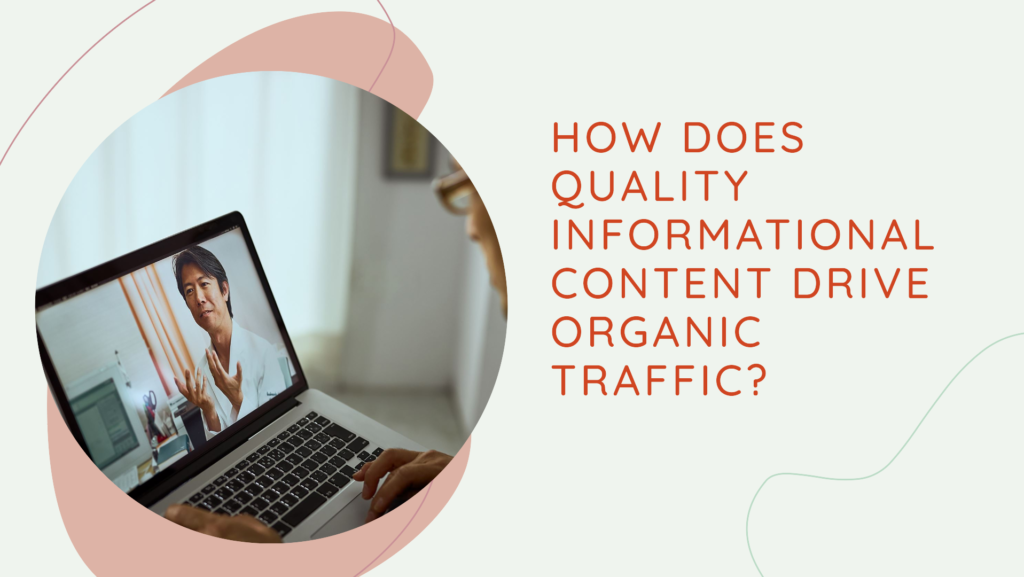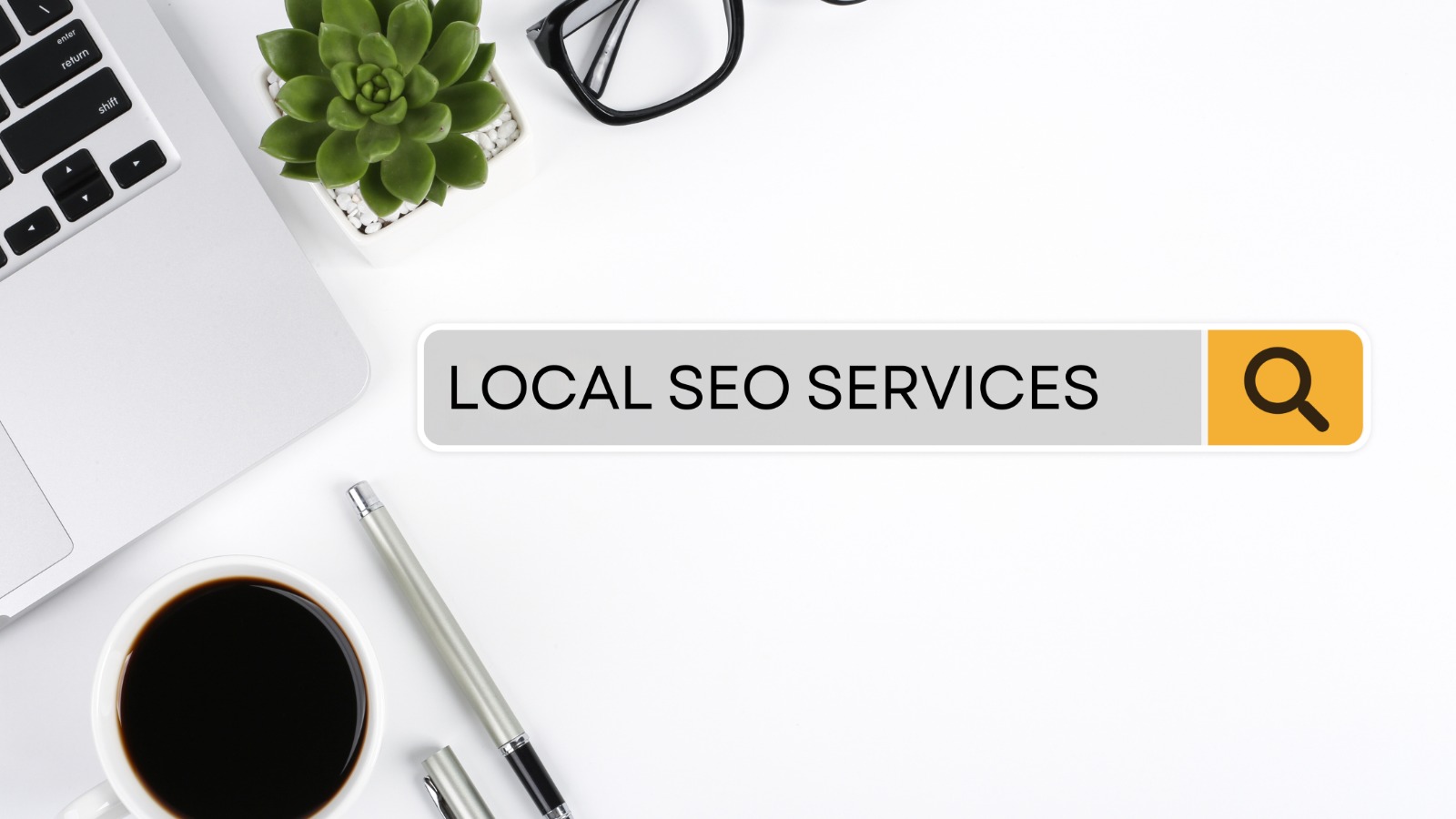In today’s digital world, providing valuable and relevant information to your audience is key to attracting and retaining visitors. But how exactly does quality informational content drive organic traffic?
When you create content that answers your audience’s questions, solves their problems, or provides valuable insights, you establish yourself as an authoritative source in your industry. This not only helps build trust with your audience but also encourages them to share your content with others, increasing its reach and potential for generating organic traffic.
Furthermore, search engines like Google prioritize high-quality content in their search results. By consistently producing informative and valuable content, you can improve your website’s visibility, boost your rankings, and attract more organic traffic.
To effectively drive organic traffic with quality informational content, it’s important to understand your target audience, conduct keyword research, and deliver content that meets their needs and interests. By doing so, you’ll not only enhance your website’s visibility but also establish your brand as a go-to resource for valuable information.
Table of Contents
ToggleImportance of Quality Informational Content in Driving Organic Traffic
Quality informational content plays a crucial role in driving organic traffic to your website. When you create content that answers your audience’s questions, solves their problems, or provides valuable insights, you establish yourself as an authoritative source in your industry. This not only helps build trust with your audience but also encourages them to share your content with others, increasing its reach and potential for generating organic traffic.
In addition to building trust and encouraging sharing, quality informational content also improves your website’s visibility in search engine results. Search engines like Google prioritize high-quality content that provides value to users. By consistently producing informative and valuable content, you can improve your website’s rankings and attract more organic traffic.
Understanding Organic Traffic and Its Benefits
Organic traffic refers to the visitors who come to your website through unpaid search engine results. Unlike paid traffic, organic traffic is driven by the relevance and quality of your content. When you create high-quality informational content that aligns with what your target audience is searching for, you have the potential to attract a substantial amount of organic traffic.
One of the major benefits of organic traffic is its sustainability. Unlike paid advertising, where traffic reduces once you stop investing in ads, organic traffic can continue flowing to your website long after you’ve published your content. This makes organic traffic a valuable asset for any business looking to establish a long-term online presence.
The Role of Search Engines in Driving Organic Traffic
Search engines like Google are the primary drivers of organic traffic. When users search for information, products, or services, search engines analyze billions of web pages to deliver the most relevant and valuable results. By producing quality informational content, you can increase your chances of appearing in these search results and driving organic traffic to your website.
Search engines use complex algorithms to determine the quality and relevance of web pages. Factors such as the accuracy and reliability of the information, the user experience on the website, and the number of external websites linking to it all play a role in determining a page’s ranking in search results. By consistently producing high-quality informational content, you can improve your website’s visibility, boost your rankings, and attract more organic traffic.
Characteristics of Quality Informational Content
To effectively drive organic traffic with informational content, it’s important to understand what makes content high-quality and valuable to your audience. Here are some characteristics of quality informational content:
- Relevance: Your content should address topics that are relevant to your target audience. Understanding their needs, pain points, and interests will help you create content that resonates with them and drives organic traffic.
- Accuracy and Credibility: Your content should provide accurate and reliable information. Fact-checking and citing credible sources can help establish your content’s credibility and build trust with your audience.
- Uniqueness: Your content should offer a unique perspective or provide insights that are not readily available elsewhere. This will help differentiate your content from the competition and attract more organic traffic.
- Engaging Format: Presenting your content in an engaging format, such as using visuals, videos, or interactive elements, can enhance the user experience and make your content more shareable.
- Clear and Concise Writing: Writing in a clear and concise manner makes it easier for your audience to understand and digest your content. Avoid jargon and unnecessary complexity, and make sure your content is easy to read and follow.
How to Create High-Quality Informational Content
Creating high-quality informational content requires a strategic approach. Here are some steps you can follow to create content that attracts organic traffic:
- Identify Your Target Audience: Understanding your target audience is crucial for creating content that resonates with them. Conduct market research, analyze your existing audience, and identify their needs, pain points, and interests.
- Conduct Keyword Research: Keyword research helps you identify the search terms and phrases your target audience is using to find information related to your industry. Use keyword research tools to identify relevant keywords and incorporate them into your content.
- Plan Your Content: Develop a content plan based on your target audience’s needs and interests. Identify the topics and subtopics you want to cover and create an outline for each piece of content.
- Write Engaging Headlines: Craft compelling headlines that grab attention and entice readers to click and read your content. Use action words, numbers, and intriguing statements to make your headlines stand out.
- Provide Valuable Information: Focus on providing valuable information that addresses your audience’s questions, solves their problems, or offers insights into their interests. Conduct thorough research and provide accurate and reliable information in your content.
- Optimize for Readability: Make your content easy to read and understand. Use subheadings, bullet points, and short paragraphs to break up text and improve readability. Incorporate visuals and multimedia elements to enhance the user experience.
- Include Calls to Action: Encourage your audience to take specific actions after reading your content. This could be signing up for a newsletter, downloading a free resource, or contacting your business for more information.
By following these steps, you can create high-quality informational content that appeals to your target audience and drives organic traffic to your website.
Keyword Research for Informational Content
Keyword research is an essential part of creating informational content that drives organic traffic. By understanding the search terms and phrases your target audience is using, you can optimize your content to appear in relevant search results. Here are some tips for conducting keyword research:
- Use Keyword Research Tools: Utilize keyword research tools like Google Keyword Planner, SEMrush, or Moz Keyword Explorer to discover relevant keywords and phrases. These tools provide insights into search volume, competition, and related keywords.
- Focus on Long-Tail Keywords: Long-tail keywords are longer and more specific phrases that usually have lower search volume but higher intent. Targeting long-tail keywords allows you to attract more qualified traffic and compete with less competition.
- Consider User Intent: Understand the intent behind the keywords your audience is using. Are they looking for information, seeking solutions to a problem, or looking to make a purchase? Align your content with the user intent to attract the right audience.
- Analyze Competitor Keywords: Analyze the keywords your competitors are targeting to identify gaps and opportunities. Look for keywords they are not targeting but are relevant to your audience and create content around those keywords.
- Optimize for Featured Snippets: Featured snippets are the highlighted search results that appear at the top of Google’s search results page. Targeting keywords that have featured snippet opportunities can help increase your visibility and drive organic traffic.
By conducting thorough keyword research and optimizing your content accordingly, you can increase your chances of ranking higher in search results and driving organic traffic to your website.
On-Page Optimization Techniques for Driving Organic Traffic
On-page optimization is the process of optimizing individual web pages to improve their visibility and attract organic traffic. Here are some on-page optimization techniques you can implement:
- Optimize Page Titles and Meta Descriptions: Craft compelling page titles and meta descriptions that include relevant keywords and entice users to click. Keep them concise and within the character limits to ensure they display properly in search results.
- Use Header Tags: Use header tags (H1, H2, H3, etc.) to structure your content and make it easier for search engines to understand. Incorporate relevant keywords in your headings to improve your content’s visibility.
- Optimize URL Structure: Create SEO-friendly URLs that include relevant keywords and accurately describe the content of the page. Avoid using long, complex URLs and use hyphens to separate words.
- Optimize Image Alt Text: When using images in your content, optimize the alt text to include relevant keywords and provide a description of the image. This helps search engines understand the content of the image and improves accessibility.
- Internal Linking: Incorporate internal links within your content to guide users to other relevant pages on your website. This not only improves the user experience but also helps search engines discover and index your content more effectively.
- Optimize Page Loading Speed: Improve your website’s loading speed by optimizing images, minifying code, and leveraging browser caching. A fast-loading website provides a better user experience and can positively impact your organic rankings.
Off-Page Optimization Strategies for Increasing Organic Traffic
Off-page optimization refers to activities performed outside of your website to improve its visibility and attract organic traffic. Here are some off-page optimization strategies you can implement:
- Build High-Quality Backlinks: Backlinks are links from external websites to your website. They are an important ranking factor for search engines and can significantly impact your organic traffic. Focus on building high-quality backlinks from reputable websites in your industry.
- Guest Blogging: Write guest blog posts for authoritative websites in your industry. This not only helps you establish yourself as an expert but also allows you to include links back to your website, driving organic traffic.
- Social Media Engagement: Engage with your audience on social media platforms by sharing your content, responding to comments, and participating in relevant conversations. Social media engagement can help increase your content’s reach and attract more organic traffic.
- Influencer Marketing: Collaborate with influencers in your industry to promote your content. Influencers have a dedicated following and can help amplify your content’s reach, driving organic traffic to your website.
- Online PR and Outreach: Reach out to online publications, journalists, and bloggers to get your content featured or mentioned. This can help increase your brand’s visibility, attract backlinks, and drive organic traffic.
- Participate in Online Communities: Join relevant online communities, forums, and Q&A platforms where your target audience hangs out. Provide valuable insights, answer questions, and include links to your content when relevant. This can help establish your expertise and attract organic traffic.
Measuring the Impact of Quality Informational Content on Organic Traffic
Measuring the impact of your quality informational content on organic traffic is essential for evaluating your content marketing efforts and making data-driven decisions. Here are some key metrics you can track:
- Organic Traffic: Monitor the overall organic traffic to your website using tools like Google Analytics. Track the number of visitors, pageviews, and the average time spent on your website.
- Keyword Rankings: Track the rankings of your target keywords in search engine results. Tools like SEMrush or Moz can provide insights into your keyword rankings and help identify areas for improvement.
- Backlinks: Monitor the number and quality of backlinks pointing to your website. Tools like Ahrefs or Majestic can help you analyze your backlink profile and identify opportunities for building more high-quality backlinks.
- Engagement Metrics: Monitor engagement metrics such as bounce rate, time on page, and social shares. These metrics indicate how well your content resonates with your audience and how engaged they are.
- Conversion Rates: Track the conversion rates of your content, such as newsletter sign-ups, downloads, or form submissions. This helps you understand how effectively your content is driving actions from your audience.
- Referral Traffic: Monitor the referral traffic to your website to identify the sources that are driving the most organic traffic. This can help you identify high-performing channels and optimize your content distribution strategies.
Conclusion: The Long-Term Benefits of Investing in Quality Informational Content
Investing in quality informational content is a valuable long-term strategy for driving organic traffic to your website. By understanding your target audience, conducting keyword research, and consistently creating high-quality content, you can improve your website’s visibility in search results, attract more organic traffic, and establish your brand as a go-to resource for valuable information.
Remember to focus on providing value, addressing your audience’s needs, and optimizing your content for search engines. By following best practices and continuously improving your content marketing efforts, you can reap the long-term benefits of driving organic traffic with quality informational content. So start creating valuable content today and watch your organic traffic grow.
FAQs about Quality Informational Content and Organic Traffic
Q1: What is quality informational content?
Ans. Quality informational content is informative, valuable, and relevant to your target audience. It answers their questions, solves their problems, or offers unique insights.
Q2: How does quality informational content drive organic traffic?
Ans. It establishes you as an authority, encourages sharing, and improves search engine ranking, making your content more visible to organic searches.
Q3: What are the benefits of organic traffic?
Ans. Organic traffic is sustainable and cost-effective, attracting visitors through valuable content rather than paid ads.
Q4: How do search engines determine organic ranking?
Ans. Search engines consider factors like information accuracy, user experience, and backlinks from credible websites.
Q5: What are some characteristics of high-quality informational content?
Ans. It’s relevant, accurate, unique, engaging, clear, and concise.
Q6: How do I create high-quality informational content?
Ans. Identify your audience, conduct keyword research, plan your content, write compelling headlines, and optimize for readability.
Q7: What is keyword research and why is it important?
Ans. Keyword research helps you identify what your target audience is searching for, allowing you to optimize your content for those terms.
Q8: What are some on-page optimization techniques?
Ans. Optimize page titles and descriptions, use header tags, create SEO-friendly URLs, and improve loading speed.
Q9: What are some off-page optimization strategies?
Ans. Build backlinks, participate in guest blogging and social media engagement, and collaborate with influencers.
Q10: How do I measure the impact of my content?
Ans. Track organic traffic, keyword rankings, backlinks, engagement metrics, conversion rates, and referral traffic.
















Select your comment provider from settings.